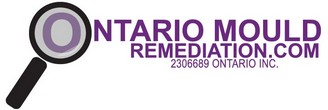Mold(s) are tiny organisms, fungi specifically, that reproduce and grow at an extreme pace. Most commonly found on food or materials that have been saturated by water, mold can take on many forms. We see mold mostly as black, white or brown spores that can resemble decay or rot. Depending on the formation of the spores and on their color, one can sometimes classify the fungi group. However, the specific type of mold can vary as there are thousands of types of mold.
Smell is also another strong indicator of a molds presence as many produce an earthy, musty smell. This smell if often the first sign of mold growth for many homeowners when mold is present in building materials.
Although many molds are harmful to both materials and our own health, not all molds are dangerous. In fact, some foods are created through the controlled growth of mold. Even penicillin, the most widely known antibiotic on Earth, is obtained from a specific type of mold. Being a key ingredient in penicillin, it is arguable that we can attribute our very existence to mold.
Other molds produce hazardous materials that can cause health problems such as respiratory failure. One such material is Mycotoxins which is a toxic substance that can result in headaches, migraines, rashes, tiredness, sinus problems, difficulty breathing and chronic cough to name a few.
Now that we’ve answered the questions what is mold, let’s learn about how it grows, why it grows and where it grows in the next step of The Mold Journey.
Learn everything about mold:
What is mold?
How does mold grow?
What does mold smell like?
Is mold a concern?
How do you kill mold?
Can I clean mold?
Can I paint over mold?
How to stop mold growth
How serious is a mold problem?
What kind of mold do I have?
Why should I have mold tested?
Mold health problems
Mold removal costs
Does insurance cover mold?
